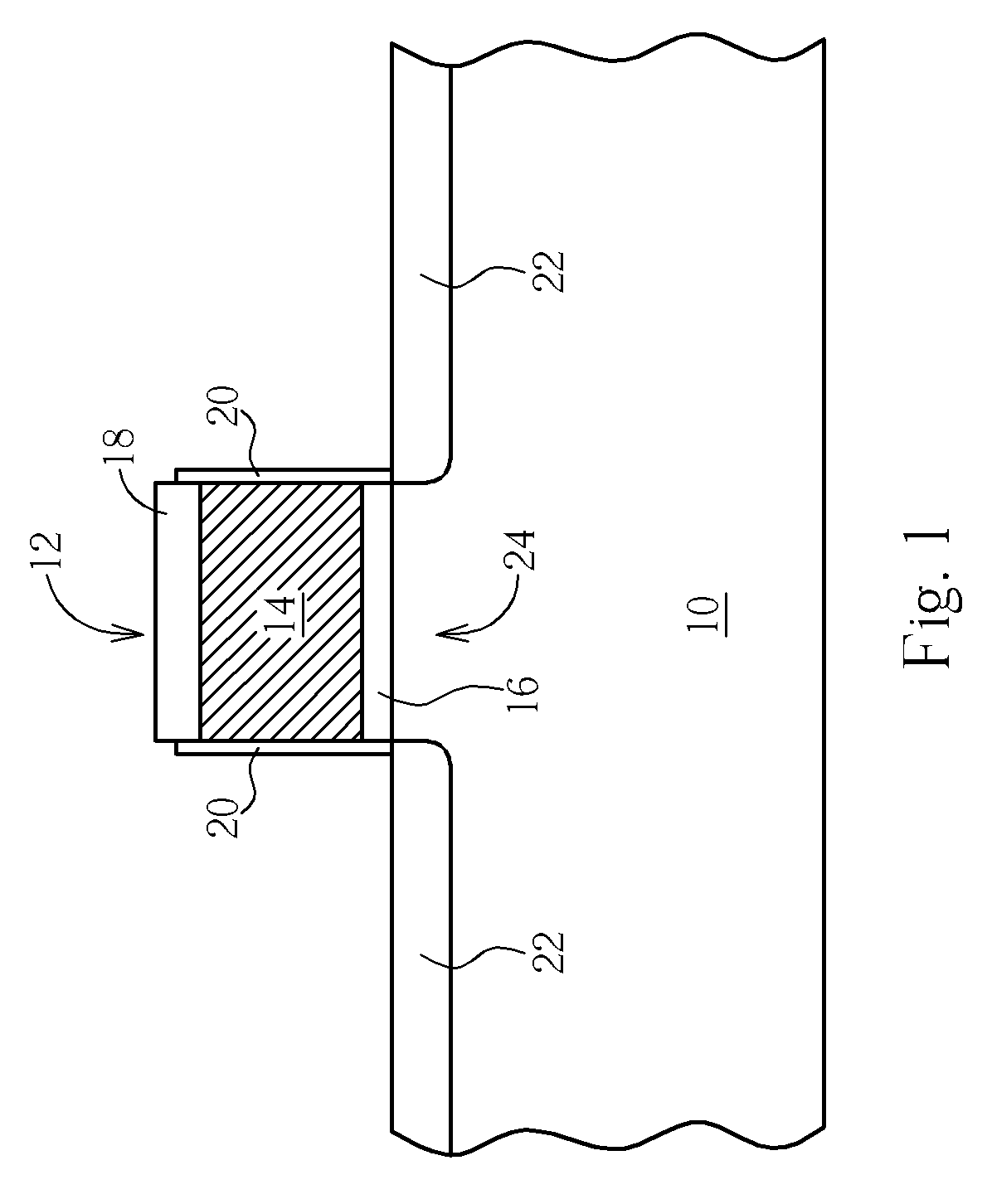Method for forming fully silicided gates
- Summary
- Abstract
- Description
- Claims
- Application Information
AI Technical Summary
Benefits of technology
Problems solved by technology
Method used
Image
Examples
Embodiment Construction
[0025]In describing the preferred embodiments of the present invention, reference will be made herein to FIGS. 1-31 of the drawings. Features of the invention are not drawn to scale in the drawings. It is to be understood that some lithographic, ion implanting and etching processes relating to the present invention method are known in the art and thus not explicitly shown in the drawings.
[0026]Please refer to FIGS. 1-9. FIGS. 1-9 are schematic, cross-sectional diagrams illustrating the method for forming fully silicided gate electrode of a metal-oxide-semiconductor (MOS) transistor device in accordance with one preferred embodiment of this invention. It is noted that this invention is applicable to both NMOS and PMOS processes.
[0027]As shown in FIG. 1, a semiconductor substrate 10 is provided. According to this invention, the semiconductor substrate 10 may be a silicon substrate or a silicon-on-insulator (SOI) substrate, but not limited thereto. Preferably, the semiconductor substra...
PUM
 Login to View More
Login to View More Abstract
Description
Claims
Application Information
 Login to View More
Login to View More - R&D
- Intellectual Property
- Life Sciences
- Materials
- Tech Scout
- Unparalleled Data Quality
- Higher Quality Content
- 60% Fewer Hallucinations
Browse by: Latest US Patents, China's latest patents, Technical Efficacy Thesaurus, Application Domain, Technology Topic, Popular Technical Reports.
© 2025 PatSnap. All rights reserved.Legal|Privacy policy|Modern Slavery Act Transparency Statement|Sitemap|About US| Contact US: help@patsnap.com



